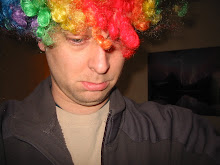 The distrust between the Ogleds and Ocks has spanned several centuries. The river Dordogne that separates the two ethnic groups from one another along with its guarded bridges and frequent inspections has been a major source of irritation to the non-aligned segments of the valley’s residents as well as its smugglers. As a result, numerous means to traverse the border have been devised and used, including tunnels, zip lines, and makeshift watercraft.
The distrust between the Ogleds and Ocks has spanned several centuries. The river Dordogne that separates the two ethnic groups from one another along with its guarded bridges and frequent inspections has been a major source of irritation to the non-aligned segments of the valley’s residents as well as its smugglers. As a result, numerous means to traverse the border have been devised and used, including tunnels, zip lines, and makeshift watercraft.During times of war, several of the accomplished magic users of the region developed more advanced methods to make the crossing - devices which they would loan or rent to those deemed reliable enough to return them. Among these are the creations known as the Rings of Velav.
It’s unknown how many of these rings the wizard Velav has crafted, but their magical value is the same. The rings are made of an unknown heavy metal, and come in two colors - each with a matching rune. When removed from the finger and thrown, they will expand after landing to some three feet in diameter. At this point, their center will appear to contain bright lights and fog, corresponding to its original hue. Any item or individual that enters one of these hoops will exit from the other.
The value of Velav’s Rings is diminished by their range - they need to be thrown by an ungloved hand in order to function properly.
The Rings of Velav
The rings come in one of two colors: green or red, with matching runes. When thrown by hand, if landing on a flat and large enough surface, they will adhere to it and expand to a 3’ diameter hoop. Items or individuals entering one hoop will exit the other hoop at the same velocity and with the same inertia as when entering it. For example: A green ring is thrown onto a surface 60’ below, and a red one onto the ground some 10’ away at the same level as the thrower. If the green ring is then jumped into, the jumper will exit the red ring at the original angle of entrance and at the speed of someone falling 60’ (with possible resultant injury).
The thrown and enlarged rings will lose their adhesion and revert to normal size after d6 turns. They cannot be picked up or moved beforehand once enlarged. A thrown ring cannot be entered until its counterpart has been thrown, its center remaining solid until then.
The rings do not like the timid - those tempted to test the enlarged opening with a toe, stick, etc. will find that the object will protrude from the opposite ring, but after one minute of being penetrated in this manner, both rings will close, perfectly severing anything that was inside.
Clever players or NPCs may discover it’s possible to throw one ring onto a surface and another directly above it at some distance, creating a trap where an individual who falls into the first hoop exits from the second and falls back again into the first, continually falling in this way until the rings once again revert to normal size.
A ring can be thrown into its enlarged opposite. If this is done, both rings will instantly disappear, returning to the laboratory of Velav where he recharges them. The rings will similarly disappear once their last charge has been used - they typically have 3d6 charges when found.







3 comments:
You have to somehow incorporate GLADOS into this!
I like this. Just the right amount of crazy combined with a the maddening whiff of "if we're clever we can use this to our advantage!"
@Human's Folly: Well spotted!
@Trey: Thanks - Yep, interesting ways to get there from here. There's always using it to chop stuff too (treasure chests, monsters?), which is hopefully figured out without dismembering or killing anyone. If I can use this in play, I'll have anyone who passes through briefly see a wizard sleeping in his laboratory or else working at something, just for flavor or to hint at a future encounter.
Post a Comment